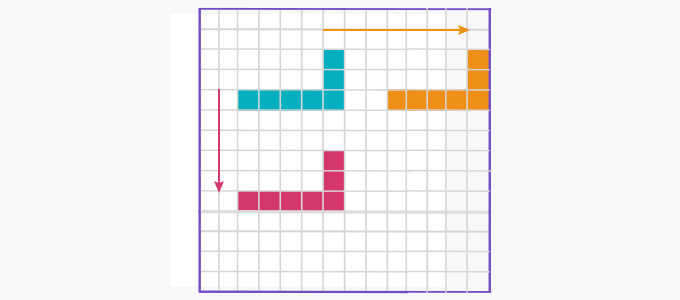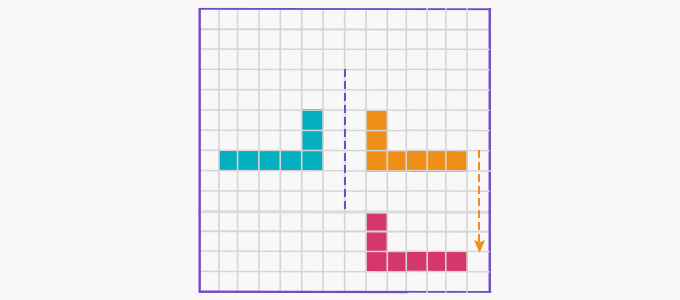Transformation Geometry
Transformations
Transformation means to change. Hence, a geometric transformation would mean to make some changes in any given geometric shape.
Types of Transformations:
Based on how we change a given image, there are five main transformations.
1. Translation happens when we move the image without changing anything in it. Hence the shape, size, and orientation remain the same.
For example:
The given shape in blue is shifted 5 units down as shown by the red arrow, and the transformed image formed is shown in maroon. Also, moving the blue shape 7 units to the right, as shown by a black arrow, gives the transformed image shown in black.

2. Rotation is when we rotate the image by a certain degree.
For example: On rotation of the blue image by 90º, we get the red image.

3. Reflection is when we flip the image along a line (the mirror line). The flipped image is also called the mirror image
For example: For the given picture with the mirror line, the blue image is one unit away from the mirror line, and the mirror image (red image) formed will also be a unit away from the mirror line.

4. Dilation is when the size of an image is increased or decreased without changing its shape.
For example: For the given blue image the red image will be a dilated one.

5. Glide Reflection is when the final image which we get from reflection is translated.
For example: Reflect the given image along the black axis and then move it 6 units down. The glide reflection of the blue image is the green image.

| Fun Facts – Even after transforming a shape (translate, reflect or rotate), the angles and the lengths of the sides remain unaffected. |
















